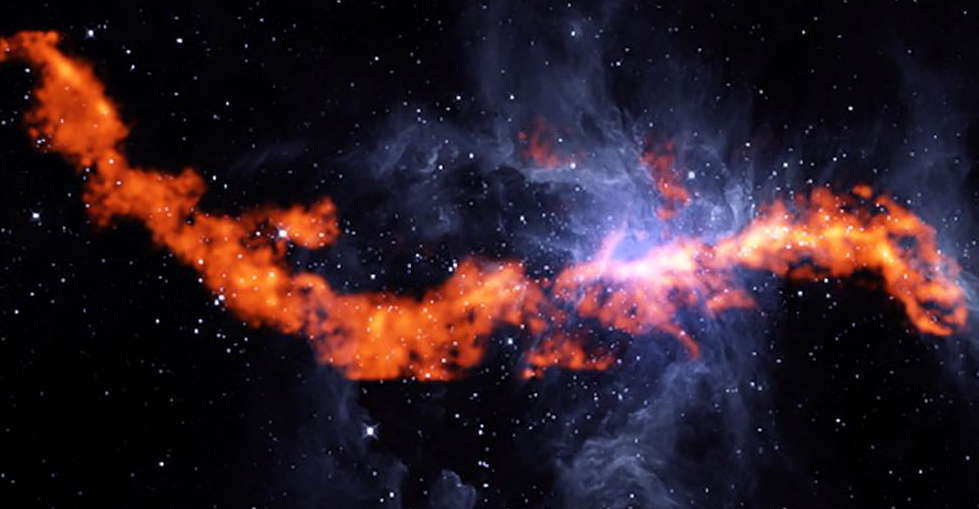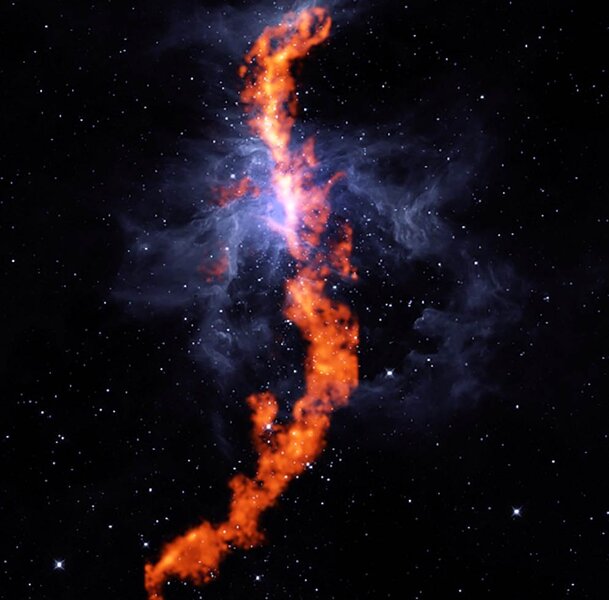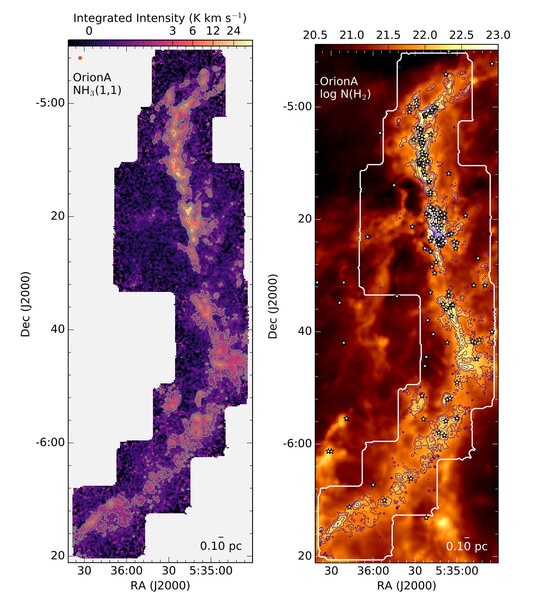Create a free profile to get unlimited access to exclusive videos, sweepstakes, and more!
A 500 trillion km long streamer of ammonia in Orion

If you have even a passing interest in astronomy, you're probably familiar with the magnificent Orion Nebula, a huge gas cloud busily forming stars in its center. At a distance of about 1300 light-years, it's so close and so luminous that it's easily visible to the naked eye as the middle star in Orion's "dagger."
But there is a whole lot more going on in that nebula than meets the eye. For one thing, the visible part you see in most photos is just a small part of a much larger cloud, one that's cold and dark and so doesn't emit visible light. Stars forming near the inside edge of it ate away at the material, popping a hole in the side of it; that's what we see as the Orion Nebula.
But even that’s not the whole picture. There are structures running through the nebula that are completely invisible unless you look using the right kind of light. Astronomers pointed the gigantic Green Bank Telescope toward Orion, tuning it to look at centimeter-wavelength light, far outside what our eyes see. What those observations reveal is amazing: a filament of gas nearly 500 trillion kilometers long!
That shot is a combination of two different images: The blue shows warm dust seen by the WISE (Wide-field Infrared Survey Explorer) observatory, which shows the more familiar shape of the Orion Nebula; and the orange is the filament, seen in the light of ammonia gas strewn along its length.
Ammonia is a great way to see these structures because it's a simple molecule that is found in cold, dark clouds, and the light it emits has a wavelength of about a centimeter, which can easily pierce through and escape the surrounding material. Visible light is absorbed nearly completely by such stuff, which is why it looks dark to our eyes. Using microwave and radio telescopes allows us to peer deeply inside these nebulae.
These filaments are seen in lots of regions in the galaxy where stars are forming from dense gas clouds. We've known about them for some time, but things really took a leap forward when the European Space Agency launched the Herschel Observatory, which mapped them using far infrared light.
And now the Green Bank Telescope (or GBT) can map them in high resolution. This is important: Stars are being born along these filaments, and they show up as brighter knots of emission along it. Material from the filament itself flows down into these forming stars like a creek flowing down into a crack in the ground. The protostars' gravity pulls the material in, and they gain enough mass to grow into true stars. When you look at this huge, long structures, you are literally seeing stars in the first stages of being born. Lower-resolution images just show them as lumps, but the GBT can see the material as it falls toward them.
And there's a lot of raw material here. The total mass of this filament is 5000 times the mass of the Sun. Many of these stars might grow more massive than our Sun (Orion is a site of massive star formation), but in general far more lower-mass stars are born there, so tens of thousands of stars could be created here eventually.
It's not clear why these filaments form in the first place. We know that inside dark clouds the gas is in motion, sometimes flowing in huge waves, pushed around by the energy of the stars forming within. One idea is that a filament forms where two waves meet, just as you'd see at the beach if two waves moving in slightly different but converging directions met. They'd form a ridge between them where they collide; that's the analogy to one of these cosmic filaments.
The GBT observations are part of a larger-scale study to observe these filaments in nearby star-forming regions; Orion is just one of the more dramatic ones. But astronomers are trying to answer many still unresolved questions about how filaments birth stars. For example, they can observe the specific motions inside the filament, using the Doppler shift to monitor the direction and velocity of the gas flow. Does it move smoothly, or is it turbulent? Does the gas start rotating near the newly forming stars (that's important, since that rotation helps the material flatten into a disk around the star, which can then form planets)? How stable are these filaments; do they last a long time or does their own self-gravity and internal turbulence pull them into pieces?
When I look at images like this, I can't help but wonder if we're seeing what our own Sun looked like 4.6 billion years or so ago. Do we humans owe our existence to some long-ago-dispersed filament of gas, a streamer dozens of light-years long and a trillion kilometers thick that fed the raw materials that built up into literally everything around us on Earth?
















